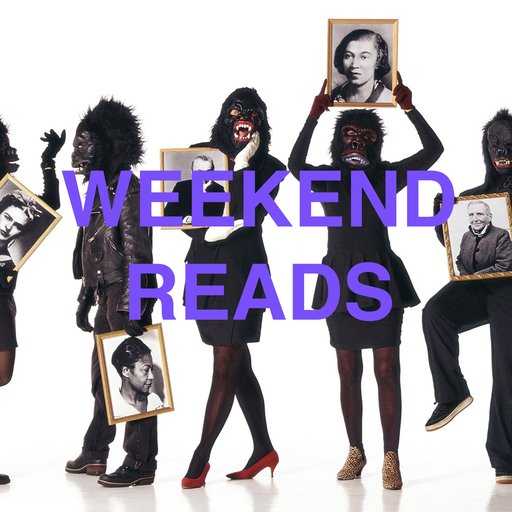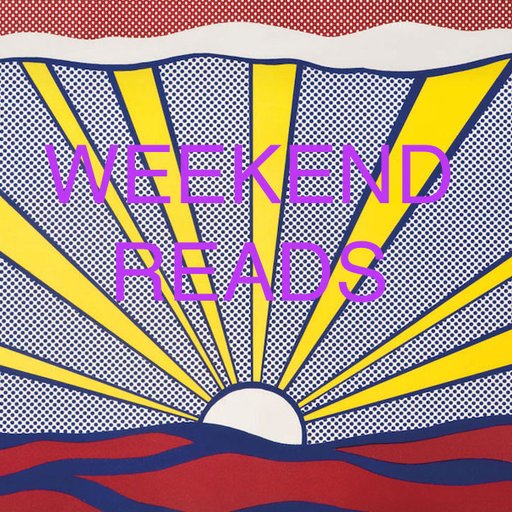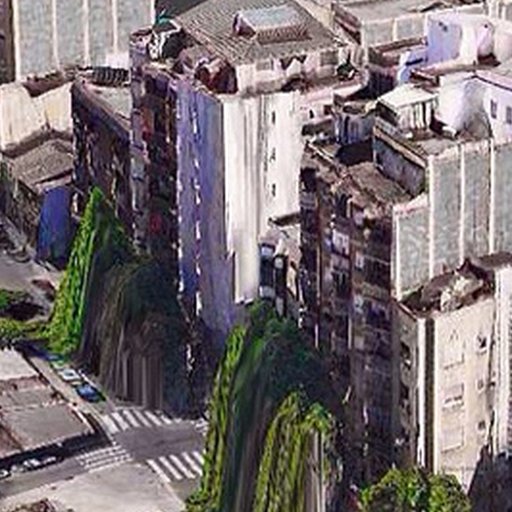Take This Sculpture, Please: Calvin Tomkins profiles the influential sculptor Charles Ray, ahead of his retrospective at the Art Institute of Chicago. The piece’s title comes from a trip to the Metropolitan Museum of Art, where Ray admires an archaic Kouros statue: “I’m really interested in what happens to a work as it tumbles through time, and meaning is washed away. The Kouros is still here, stepping forward. He’s a meaning machine.” Tomkins also includes a fascinating anecdote about Ray’s new sculpture “Huck and Jim,” originally destined for the plaza of the new Whitney but later declined by the museum out of concern that it would come across as racially insensitive in that context (and later passed up by the curators of the Chicago exhibition). (The New Yorker)
Mad About a Mosque: Randy Kennedy reports on the Swiss-Icelandic artist Christoph Büchel’s project for Iceland’s Venice Biennale pavilion, which is provoking outrage from city officials and police. Called The Mosque: The First Mosque in the Historic City of Venice, the work transforms a (currently unused) Catholic church into a functioning mosque in a pointed critique of both the rising tide of Islamophobia in Europe as well as the lack of mosques in the Venice city center despite a sizable and growing Muslim community. Büchel himself blames the commercialism of the art world as well as endemic racism and xenophobia for the reaction against his work, stating that “Venice has always been a town of trade…Right now this business is art, and if you do anything to upset that business, they will try to stop you any way they can.” (The New York Times)
American Beauty: Following up his three-part paean to the new Whitney, Jerry Saltz returns to the building for a lively debate with Benjamin Wallace-Wells. The prompt—is there such a thing as American Modernism?—is an old question, but the back-and-forth includes great close-readings of specific pictures in the Whitney’s inaugural exhibition. Here’s Saltz on Hopper: “His invisible modernity is in the radical ways he redefined the conventions of good painting, modernist and traditional alike; he brought ideas of illustration to art, roughed up traditional painting while smoothing out modernism's stuttering touch, turning his blocky composition into his own narrative versions of Mondrian and Malevich. His image of an empty storefront at 7 a.m. at the end of a town street on the edge of the woods rides that thin American line between lives perused, lives lived, and lives lost along the way.” (Vulture)
The Gift That Keeps Giving: The Seattle-based critic Jen Graves reports on the fascinating story of the artist Matthew Offenbacher and his partner Jennifer Nemhauser, who gave the Seattle Art Museum a significant, collection-expanding gift of works by 50 female and queer artists that does double duty as a conceptual art project. Titled "Deed of Gift," it was financed entirely with a $25,000 art award won by Offenbacher. The professionalized, academically based, quasi-scientific, yet popular art museum—the American art museum as it stands today, like Seattle Art Museum—is crawling with conflicts and paradoxes that never overtly make it into the galleries,” Graves writes. “Those are the heart of Deed of Gift.” (The Stranger)
Analog Dude in a Digital World: For their latest iteration of their typically screen-based feature Consumer Reports (which tracks the media consumption of various art world notables), ARTnews profiles Matthew Higgs (the director of the New York alternative space White Columns). His hour-by-hour report of his reading, watching, and listening material is heavily focused on books, records, and (physical) magazines, with a notable dearth of social media and only select online content. Highlights include Amaldur Indridason’s novel Reykjavik Nights (“super gloomy”), Entertainment Weekly (“probably my favorite magazine, their reviews – of just about everything – are spookily ‘accurate.’”), and HBO’s Veep (“at the next level in terms of the writing, acting, and story arcs”). (ARTnews)
Designer to the Spies: Charlotte Higgins covers New Zealand’s 2015 Venice Biennale pavilion Secret Power, created by the Berlin-based artist Simon Denny with collaborator David Bennewith. The project, in Denny's words, transforms the Marciana Library into an exhibition on "the way the contemporary world is depicted in imagery used by the NSA.” Denny went so far as to track down and commission a former NSA graphic designer named David Darchicourt to work on the project. Although originally unaware of Denny’s artistic intentions, Darchicourt seems to be fine with his work being used to critique his former employer of 17 years, saying “I was paid very well to do the work [for Venice] and David Bennewith was great to work with. As long as I have credit for my work I am happy.” (The Guardian)























